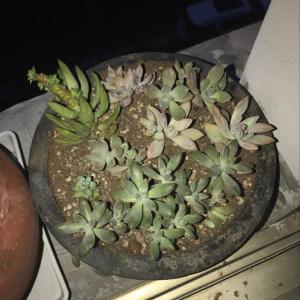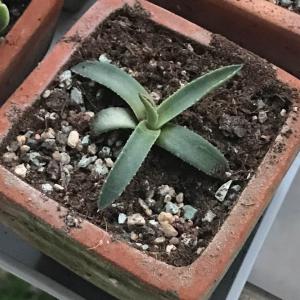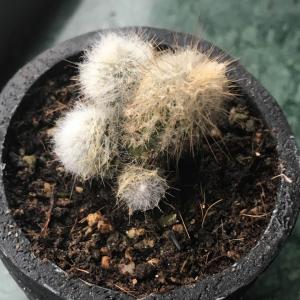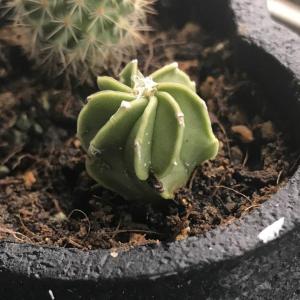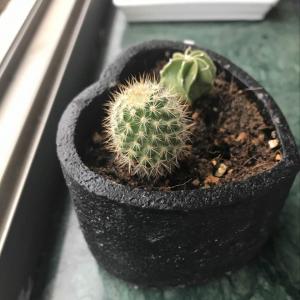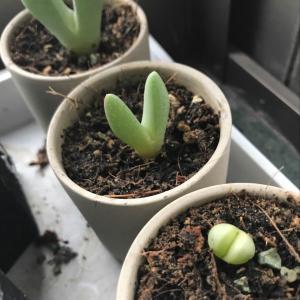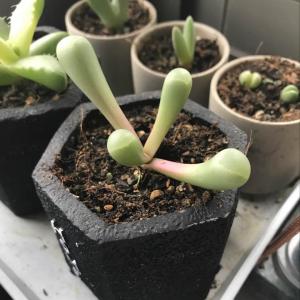文章
Miss Chen
2017年09月20日

Cuando ya no hay riesgo de heladas es el momento perfecto para preparar nuestro jardín o huerto cara a la nueva temporada. Aquí hemos recogido 10 tareas que os ayudarán a tener un jardín perfecto este año. Vamos a verlas con detalle.

1.- Lo primero es preparar el suelo. Quitar las malezas, airearlo y enriquecerlo con compost o estiércol son las tareas principales que hemos de hacerle a nuestro suelo. Si vivimos en un lugar frío podemos cubrirlo con plástico negro para que vaya cogiendo temperatura.

2.- Es el momento de ir preparando los cultivos de verano. Si el suelo y el clima lo permiten donde vivimos lo podemos hacer directamente en el suelo. Si no es así podemos iniciar los cultivos en semillero o cama caliente. Patatas, berenjenas, pimientos y demás cultivos de verano debemos comenzar a sembrarlos ya.

3.- También es un buen momento para podar los árboles y arbustos. Antes de que la savia comence a circular a toda velocidad. Dependerá mucho de dónde vivamos claro está. En lugares de climas fresco es el momento ideal pero si vivimos en zonas más cálidas ya habremos tenido que hacer la poda.

4.- Plantar árboles frutales es también una buena tarea para estas fechas. También es buen momento para plantar arbustos y plantas frutales como grosellas, frambuesas y fresas.

5.- Si no tenemos un barril de lluvia en nuestro jardín es buen momento para instalar uno. Aprovecharemos así las lluvias de primavera y podremos ahorrar un poco en la factura del agua. Además el agua de lluvia es ideal para algunas plantas como las gardenias, los arándanos y los rododendros.

6.- No podemos olvidarnos de los bulbos de floración temprana como caladiums, dalias, azafrán y jacintos. También podemos plantar los tubérculos de begonia en una maceta con compost húmedo. Cuando los brotes comiencen a salir podemos plantarlos en su lugar definitivo.

7.- No solo las plantas vuelven a la vida, también los insectos y plagas lo hacen así que si conseguimos aniquilarlos ahora nos evitaremos muchos problemas en verano. Inspecciona bien tu jardín o huerto y acaba con todas las larvas que puedas.

8.- Si tienes algún arbusto de hoja caduca que quieras cambiar de lugar es ahora cuando debes hacerlo. Hazlo un día nublado y desentierra toda la raíz que puedas. Plántalo en su nueva ubicación y riega abundantemente.

9.- Si tienes césped en tu jardín es momento de comenzar a ocuparse de él. Nada realza más un parterre que estar rodeado de un bonito césped. Comienza recogiendo las hojas secas y demás elementos que ensucien el césped. Después arranca o trata las malas hierbas y si está bien consolidado puedes darle el primer corte de la temporada. Siempre que el terreno no esté demasiado húmedo.
10.- La primavera, sobre todo en sus principios, es también buen momento para los últimos cultivos de la temporada invernal. Podemos plantar todavía nabos, remolachas, brócoli y espinacas.

1.- Lo primero es preparar el suelo. Quitar las malezas, airearlo y enriquecerlo con compost o estiércol son las tareas principales que hemos de hacerle a nuestro suelo. Si vivimos en un lugar frío podemos cubrirlo con plástico negro para que vaya cogiendo temperatura.

2.- Es el momento de ir preparando los cultivos de verano. Si el suelo y el clima lo permiten donde vivimos lo podemos hacer directamente en el suelo. Si no es así podemos iniciar los cultivos en semillero o cama caliente. Patatas, berenjenas, pimientos y demás cultivos de verano debemos comenzar a sembrarlos ya.

3.- También es un buen momento para podar los árboles y arbustos. Antes de que la savia comence a circular a toda velocidad. Dependerá mucho de dónde vivamos claro está. En lugares de climas fresco es el momento ideal pero si vivimos en zonas más cálidas ya habremos tenido que hacer la poda.

4.- Plantar árboles frutales es también una buena tarea para estas fechas. También es buen momento para plantar arbustos y plantas frutales como grosellas, frambuesas y fresas.

5.- Si no tenemos un barril de lluvia en nuestro jardín es buen momento para instalar uno. Aprovecharemos así las lluvias de primavera y podremos ahorrar un poco en la factura del agua. Además el agua de lluvia es ideal para algunas plantas como las gardenias, los arándanos y los rododendros.

6.- No podemos olvidarnos de los bulbos de floración temprana como caladiums, dalias, azafrán y jacintos. También podemos plantar los tubérculos de begonia en una maceta con compost húmedo. Cuando los brotes comiencen a salir podemos plantarlos en su lugar definitivo.

7.- No solo las plantas vuelven a la vida, también los insectos y plagas lo hacen así que si conseguimos aniquilarlos ahora nos evitaremos muchos problemas en verano. Inspecciona bien tu jardín o huerto y acaba con todas las larvas que puedas.

8.- Si tienes algún arbusto de hoja caduca que quieras cambiar de lugar es ahora cuando debes hacerlo. Hazlo un día nublado y desentierra toda la raíz que puedas. Plántalo en su nueva ubicación y riega abundantemente.

9.- Si tienes césped en tu jardín es momento de comenzar a ocuparse de él. Nada realza más un parterre que estar rodeado de un bonito césped. Comienza recogiendo las hojas secas y demás elementos que ensucien el césped. Después arranca o trata las malas hierbas y si está bien consolidado puedes darle el primer corte de la temporada. Siempre que el terreno no esté demasiado húmedo.
10.- La primavera, sobre todo en sus principios, es también buen momento para los últimos cultivos de la temporada invernal. Podemos plantar todavía nabos, remolachas, brócoli y espinacas.
0
0
文章
Miss Chen
2017年09月20日

El género Ruellia pertenece a la familia de las Acantáceas y nos ofrece ejemplares como esta ruellia azul o Ruellia coerulea. Esta planta de poco menos de 1 metro de altura podemos plantarla en diferentes tipos de suelo, incluso junto al estanque. Esta planta perenne es oriunda de América y se la encuentra con facilidad en México, Brasil, Argentina y Uruguay.
La ruellia es una planta muy rústica y resistente, de cultivo fácil como veremos a continuación. Sus tallos son rectos y sus hojas lanceoladas. Son de un color verde intenso que cuando la planta es cultivada al sol toman un tono metálico. También podemos encontrar variedades que no superan los 25 cm de altura. Las flores de la ruellia son terminales y con forma acampanada. Además de azules pueden ser blancas o rosas. Se trata de una planta muy versátil que podemos usar en macetas o en el suelo e incluso para decorar nuestro estanque como dijimos anteriormente.

La ruellia azul se puede cultivar tanto a pleno sol como en semisombra. No necesita gran profundidad de suelo pero sí que éste sea rico en materia orgánica. El riego debe ser constante. Aunque tolera bien los encharcamientos también soporta cortos periodos de sequía. Cuando se cultiva en zonas anegadas hay que vigilar la posible presencia de enfermedades fúngicas. Se suele aconsejar el pinzamiento de las puntas para que la planta se asiente y tenga más vigor cara la floración. Tras la primera floración se aconseja también podarla.

La fertilización debe ser siempre con materia orgánica pues tolera muy mal los excesos de fertilizante que pueden matarla con facilidad. También se puede cultivar en interior si le aportamos una temperatura cálida y humedad ambiente elevada. La reproducción se puede hacer por tres medios, semillas, división y esquejes. Es muy fácil de reproducir por esquejes pues tienen una tasa elevada de éxito.

Si queremos cultivar esta planta aquí os dejamos una buena receta de suelo. Cuatro partes de sustrato de base orgánica, una parte de arena y una parte de estiércol bovino. Si compras las plantas ya listas en un centro de jardinería será recomendable que quites el envoltorio del cepellón para que se coja mejor al suelo. El hoyo donde la plantemos no debe ser mayor que el cepellón, sobre todo en profundidad. A continuación hay que regar abundantemente.

Aun siendo una planta muy fácil y resistente es necesario atender a sus especifidades. Tras la floración es importante podar la planta para que al año siguiente brote nueva y con fuerza. El otoño es la mejor época para realizar esta operación. La poda consistirá en cortar unos 10 cm todos los tallos y ramificaciones. En invierno echaremos un poco de fertilizante alrededor del tallo de la planta. Con 20 gramos por planta de una fórmula NPK 4-14-8 será más que suficiente.
La ruellia es una planta muy rústica y resistente, de cultivo fácil como veremos a continuación. Sus tallos son rectos y sus hojas lanceoladas. Son de un color verde intenso que cuando la planta es cultivada al sol toman un tono metálico. También podemos encontrar variedades que no superan los 25 cm de altura. Las flores de la ruellia son terminales y con forma acampanada. Además de azules pueden ser blancas o rosas. Se trata de una planta muy versátil que podemos usar en macetas o en el suelo e incluso para decorar nuestro estanque como dijimos anteriormente.

La ruellia azul se puede cultivar tanto a pleno sol como en semisombra. No necesita gran profundidad de suelo pero sí que éste sea rico en materia orgánica. El riego debe ser constante. Aunque tolera bien los encharcamientos también soporta cortos periodos de sequía. Cuando se cultiva en zonas anegadas hay que vigilar la posible presencia de enfermedades fúngicas. Se suele aconsejar el pinzamiento de las puntas para que la planta se asiente y tenga más vigor cara la floración. Tras la primera floración se aconseja también podarla.

La fertilización debe ser siempre con materia orgánica pues tolera muy mal los excesos de fertilizante que pueden matarla con facilidad. También se puede cultivar en interior si le aportamos una temperatura cálida y humedad ambiente elevada. La reproducción se puede hacer por tres medios, semillas, división y esquejes. Es muy fácil de reproducir por esquejes pues tienen una tasa elevada de éxito.

Si queremos cultivar esta planta aquí os dejamos una buena receta de suelo. Cuatro partes de sustrato de base orgánica, una parte de arena y una parte de estiércol bovino. Si compras las plantas ya listas en un centro de jardinería será recomendable que quites el envoltorio del cepellón para que se coja mejor al suelo. El hoyo donde la plantemos no debe ser mayor que el cepellón, sobre todo en profundidad. A continuación hay que regar abundantemente.

Aun siendo una planta muy fácil y resistente es necesario atender a sus especifidades. Tras la floración es importante podar la planta para que al año siguiente brote nueva y con fuerza. El otoño es la mejor época para realizar esta operación. La poda consistirá en cortar unos 10 cm todos los tallos y ramificaciones. En invierno echaremos un poco de fertilizante alrededor del tallo de la planta. Con 20 gramos por planta de una fórmula NPK 4-14-8 será más que suficiente.
0
0
文章
Dummer. ゛☀
2017年09月20日

Saguaro Cactus (Carnegiea gigantea) blossoms are the state flower of Arizona. The cactus is a very slow growing plant, which may add only 1 to 1,5 inches (2.5 to 3.8 cm) in the first eight years of life. The Saguaro grows arms or lateral stems but it may take up to 75 years to produce the first one. Saguaro are very long lived and many found in the desert are 175 years old. It is likely that rather than growing Saguaro cactus in the home garden, you may find yourself the becoming owner of a well established Saguaro when you buy a new home or build a home on land where Saguaro Cactus already grow.
Saguaro have barrel-shaped bodies with peripheral stems called arms. The exterior of the trunk is pleated due to the way it grows. The pleats expand, allowing the cactus to gather extra water in the rainy season and storing it in its tissues. An adult cactus may weigh 6 tons or more when filled with water and requires a strong internal support skeleton of connected ribs. A young growing Saguaro cactus may only be a few inches tall as ten year old plants and take decades to resemble the adults.
These cacti are native to and only grow in the Sonoran Desert. Saguaro are not found in the entire desert but only in areas that don’t freeze and at certain elevations. The freezing point is one of the most important considerations of where do Saguaro grow. The cactus plants are found from sea level up to 4,000 feet (1,220 m). If they are growing above 4,000 feet (1,220 m), the plants survive only on south slopes where there are fewer freezes of shorter duration. Saguaro Cactus plants are important parts of the desert ecology, both as habitat and as food.
Growing Conditions and General Care
It is not legal to procure a Saguaro Cactus for home cultivation by digging it out of the desert. Beyond that, mature Saguaro cactus plants almost always die when transplanted.
Saguaro Cactus babies grow under the protection of nurse trees. The cactus will continue to grow and often its nurse tree will expire. It is thought the cactus may cause the nurse tree to die by competing for resources. The nurse trees provide Saguaro Cactus babies with shelter from the harsh rays of the sun and dispersing moisture from evaporation.
Saguaro Cactus needs to grow in well-drained grit and receive low levels of water, with the soil drying out completely between irrigation. Annually fertilizing with cactus food in spring will help the plant complete its growth cycle.
There are common cactus pests, such as scale and mealybugs, that will require manual or chemical controls.
Saguaro Cactus Blossoms
Saguaro Cactus are slow to develop and may be 35 years of age or more before they produce the first flower. The flowers bloom in May until June and are a creamy white color and about 3 inches (7.5 cm) across. The Saguaro blossoms only open at night and close in the day, which means they are pollinated by moths, bats and other nocturnal creatures.. The flowers are generally located at the end of the arms but may occasionally decorate the sides of the cactus.

Saguaro have barrel-shaped bodies with peripheral stems called arms. The exterior of the trunk is pleated due to the way it grows. The pleats expand, allowing the cactus to gather extra water in the rainy season and storing it in its tissues. An adult cactus may weigh 6 tons or more when filled with water and requires a strong internal support skeleton of connected ribs. A young growing Saguaro cactus may only be a few inches tall as ten year old plants and take decades to resemble the adults.

These cacti are native to and only grow in the Sonoran Desert. Saguaro are not found in the entire desert but only in areas that don’t freeze and at certain elevations. The freezing point is one of the most important considerations of where do Saguaro grow. The cactus plants are found from sea level up to 4,000 feet (1,220 m). If they are growing above 4,000 feet (1,220 m), the plants survive only on south slopes where there are fewer freezes of shorter duration. Saguaro Cactus plants are important parts of the desert ecology, both as habitat and as food.
Growing Conditions and General Care

It is not legal to procure a Saguaro Cactus for home cultivation by digging it out of the desert. Beyond that, mature Saguaro cactus plants almost always die when transplanted.
Saguaro Cactus babies grow under the protection of nurse trees. The cactus will continue to grow and often its nurse tree will expire. It is thought the cactus may cause the nurse tree to die by competing for resources. The nurse trees provide Saguaro Cactus babies with shelter from the harsh rays of the sun and dispersing moisture from evaporation.

Saguaro Cactus needs to grow in well-drained grit and receive low levels of water, with the soil drying out completely between irrigation. Annually fertilizing with cactus food in spring will help the plant complete its growth cycle.
There are common cactus pests, such as scale and mealybugs, that will require manual or chemical controls.

Saguaro Cactus Blossoms
Saguaro Cactus are slow to develop and may be 35 years of age or more before they produce the first flower. The flowers bloom in May until June and are a creamy white color and about 3 inches (7.5 cm) across. The Saguaro blossoms only open at night and close in the day, which means they are pollinated by moths, bats and other nocturnal creatures.. The flowers are generally located at the end of the arms but may occasionally decorate the sides of the cactus.
0
0
文章
Dummer. ゛☀
2017年09月19日

The genus Ariocarpus has been the subject of much affection and attention by growers and botanists, but also has been surrounded by many myths that persist to date which I would like to challenge from the very beginning.
1. Contrary to popular belief Ariocarpus do not present any special problems in cultivation. Granted, these plants require a little more attention (or rather neglect) than your average cactus but there are many others far more difficult to grow. An Ariocarpus, if cared for properly, will grow steadily and flower reliably.
2. Cultural advice like “grow in full sun” and “give at least two hefty waterings in the growing season” (Needham, 1983) may very well explain the descriptive term “living fossils” often applied to Ariocarpus plants. In my Mediterranean climate Ariocarpus certainly appreciate some shading and require as much water as all other cacti, especially if grown in clay pots.
3. “Ariocarpus are the slowest growing cacti”. Well, they are particularly slow in childhood, but a 4 inches (10 cm) A. retusus can be grown in about five years, which beats many other cacti. If you want to experience “slow” try some Aztekium from seed.
4. “The minimum time to grow from seed to flowering size is probably ten years, and may well be twice that” (Weightman, 1991). Actually, A. agavoides will eagerly flower at three years from seed and most species will flower by the age of five or six years.
5. “Ariocarpus seedlings are exceptionally prone to rot.” In my experience this is not true, in fact, I have come to realize that Ariocarpus seedlings benefit, more so than other cacti seedlings, from a humid closed environment during their first year of growth. This was actually the cornerstone in developing a reliable method for raising it from seed.

1. Contrary to popular belief Ariocarpus do not present any special problems in cultivation. Granted, these plants require a little more attention (or rather neglect) than your average cactus but there are many others far more difficult to grow. An Ariocarpus, if cared for properly, will grow steadily and flower reliably.

2. Cultural advice like “grow in full sun” and “give at least two hefty waterings in the growing season” (Needham, 1983) may very well explain the descriptive term “living fossils” often applied to Ariocarpus plants. In my Mediterranean climate Ariocarpus certainly appreciate some shading and require as much water as all other cacti, especially if grown in clay pots.

3. “Ariocarpus are the slowest growing cacti”. Well, they are particularly slow in childhood, but a 4 inches (10 cm) A. retusus can be grown in about five years, which beats many other cacti. If you want to experience “slow” try some Aztekium from seed.

4. “The minimum time to grow from seed to flowering size is probably ten years, and may well be twice that” (Weightman, 1991). Actually, A. agavoides will eagerly flower at three years from seed and most species will flower by the age of five or six years.
5. “Ariocarpus seedlings are exceptionally prone to rot.” In my experience this is not true, in fact, I have come to realize that Ariocarpus seedlings benefit, more so than other cacti seedlings, from a humid closed environment during their first year of growth. This was actually the cornerstone in developing a reliable method for raising it from seed.
0
0
文章
Dummer. ゛☀
2017年09月19日

What do you do when you have to move your place of residence for a considerable distance to another part of the country or even out of the country and have to move your entire succulent collection with you?
1. Apart from the question of how to move the succulents themselves, if you are moving to another country, it is important that you know there may be plant quarantine and inspection regulations that you should investigate and your Department of Agriculture is the place to direct your inquiries.
2. If the plants are to be inspected, it is wise prior to having that done to thoroughly soak the soil and dip all plants in an insecticide solution. This should be done long enough before moving to allow time for a couple of normal waterings to leach out the excess (and the smell to hopefully disappear) and then time for the soil to dry out thoroughly. In any event, before you attempt to pack your plants for moving, the soil in the pots should have time to thoroughly dry out.
3. If there are no restrictions about moving your succulents in their pots, soil and all, you can wrap each plant, pot and soil in two or more layers of newspaper and pack them, right side up, into cartons provided by the movers. Large plants on the bottom, progressively smaller and lighter ones on top.
4. Even if shipped bareroot (no pots and soil removed), plants need a thorough drying out period before packing, to induce a state of partial dormancy so that they would not etiolate (lengthen and grow out of shape) and otherwise suffer from the time they are confined in wrappings, in a box and in the dark.
5. Most movers charge by weight as well as distance. If you have a very large collection and weight is a factor in the cost of shipping, you are better to move your succulents bare root with all soil removed. However, you would then be faced with the task of reporting the collection on arrival, on top of all the other chores of becoming settled in a new home. Succulents are wonderfully patient though and on arrival, if you can just manage to get them unwrapped and into the air and light, they will wait a few days until you can pot them up.
6. On each box of succulents ready for moving, affix a large piece of white paper and with a heavy hand and a marking pen write PLANTS – PERISHABLE on each box.
7. You must discuss with your mover the importance of packing your plants properly. If you don’t explain that you are moving perishable plants they could be packed on the bottom of the van with all your furniture on top of them!! Sometimes moving vans move the contents of more than one home in their vans. In this case it is all the more important to arrange with your mover not to put your plants under everything else in the truck.

1. Apart from the question of how to move the succulents themselves, if you are moving to another country, it is important that you know there may be plant quarantine and inspection regulations that you should investigate and your Department of Agriculture is the place to direct your inquiries.
2. If the plants are to be inspected, it is wise prior to having that done to thoroughly soak the soil and dip all plants in an insecticide solution. This should be done long enough before moving to allow time for a couple of normal waterings to leach out the excess (and the smell to hopefully disappear) and then time for the soil to dry out thoroughly. In any event, before you attempt to pack your plants for moving, the soil in the pots should have time to thoroughly dry out.

3. If there are no restrictions about moving your succulents in their pots, soil and all, you can wrap each plant, pot and soil in two or more layers of newspaper and pack them, right side up, into cartons provided by the movers. Large plants on the bottom, progressively smaller and lighter ones on top.
4. Even if shipped bareroot (no pots and soil removed), plants need a thorough drying out period before packing, to induce a state of partial dormancy so that they would not etiolate (lengthen and grow out of shape) and otherwise suffer from the time they are confined in wrappings, in a box and in the dark.

5. Most movers charge by weight as well as distance. If you have a very large collection and weight is a factor in the cost of shipping, you are better to move your succulents bare root with all soil removed. However, you would then be faced with the task of reporting the collection on arrival, on top of all the other chores of becoming settled in a new home. Succulents are wonderfully patient though and on arrival, if you can just manage to get them unwrapped and into the air and light, they will wait a few days until you can pot them up.
6. On each box of succulents ready for moving, affix a large piece of white paper and with a heavy hand and a marking pen write PLANTS – PERISHABLE on each box.

7. You must discuss with your mover the importance of packing your plants properly. If you don’t explain that you are moving perishable plants they could be packed on the bottom of the van with all your furniture on top of them!! Sometimes moving vans move the contents of more than one home in their vans. In this case it is all the more important to arrange with your mover not to put your plants under everything else in the truck.
0
0





